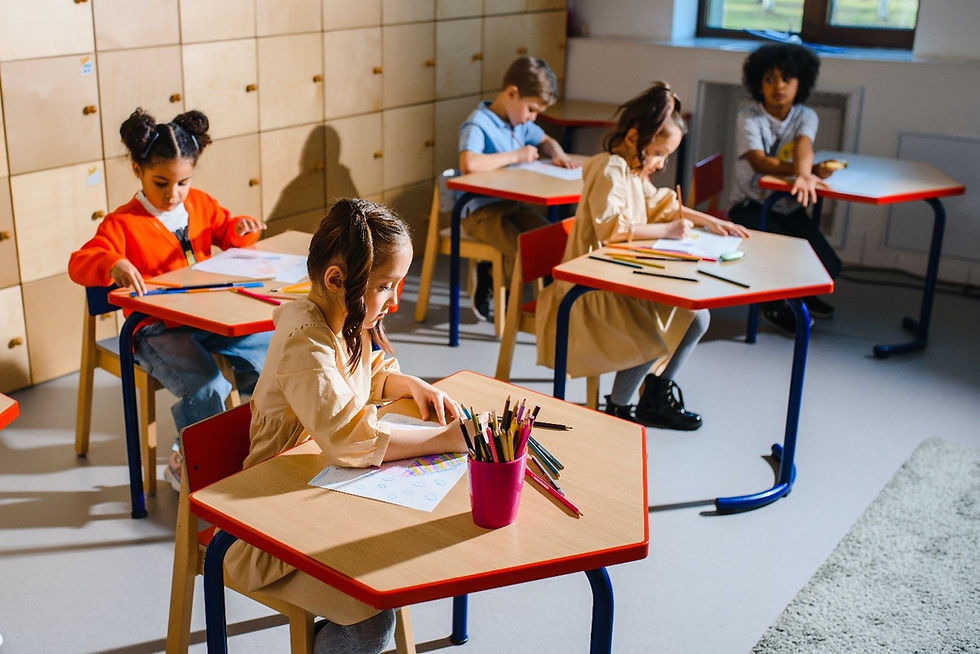Creating Inclusive Learning Environments: Diversity in the Classroom
- Mariam Rafique
- Jan 30, 2024
- 3 min read
Updated: Feb 12, 2024
"Diversity in the Classroom" is a broad topic encompassing various aspects of creating an inclusive and enriching learning environment for students of different backgrounds and experiences. To understand what you'd like to explore within this topic, I need some more context. What specifically interests you about diversity in the classroom?

Imagine a classroom transformed, not just by paint or posters, but by the vibrant mosaic of its inhabitants. Faces of every hue, voices weaving a symphony of accents, laughter resonating in many languages. This is not a utopian dream, but the potential of every classroom where diversity isn't just tolerated but celebrated. But how do we bridge the gap between potential and reality, crafting an inclusive learning environment where every student, regardless of background, feels seen, valued, and empowered to learn?
The bedrock of inclusivity lies in dismantling the invisible walls of bias. As educators, we must acknowledge our implicit assumptions and actively seek diverse perspectives. This isn't about guilt but growth. Inviting guest speakers from underrepresented communities, incorporating diverse literature into curriculums, and engaging in honest conversations about prejudice and stereotypes become the paintbrushes that repaint the walls of understanding.
Accessibility takes center stage in this inclusive classroom. Recognizing that learning styles are as varied as the faces before us, we diversify pedagogical approaches.
Visual aids dance alongside auditory explanations, kinesthetic activities complement note-taking, and differentiated instruction becomes the norm, not the exception. Imagine, for example, a history lesson exploring different perspectives on ancient Egypt. While some students delved into historical texts, others created intricate dioramas, and another group performed a skit from a commoner's perspective. The learning landscape expands, catering to individual strengths and needs. But inclusion isn't just about removing barriers but celebrating the symphony of cultures that enriches the classroom. Integrate the vibrant tapestry of diverse traditions into learning. Let students share their languages through greetings, songs, or even creating bilingual presentations. Organize cultural festivals where food, music, and stories ignite curiosity and bridge cultural divides. Remember, a classroom that echoes with the languages of the world is a classroom that speaks volumes about acceptance and appreciation.
Technology, used thoughtfully, can also become a bridge, not a chasm. Utilize translation tools to support non-native English speakers, explore virtual field trips to locations students may never physically visit, and encourage collaborative projects across geographical boundaries. Technology ceases to be a tool in a classroom where students from different countries co-write a story about climate change or create a multilingual podcast interviewing community elders. It becomes a platform for shared learning and global understanding.
Creating an inclusive environment is a continual dance, not a one-time step. Challenges will arise, and mistakes will be made. But the key lies in constant reflection, open communication, and a willingness to learn and adapt. This includes professional development for educators on culturally responsive teaching, regular student feedback sessions, and fostering collaboration within the school community. Remember, creating inclusive classrooms is not a solo act; it's a symphony played by teachers, students, and the community, each note contributing to the harmony of acceptance and belonging.
Here are some real-life examples of how teachers have woven the threads of inclusivity into their classrooms:
A high school English teacher created a "cultural cookbook" project where students shared family recipes and wrote accompanying essays about the cultural significance of each dish. This fostered understanding and appreciation for diverse culinary traditions.
A middle school science teacher used Google Earth to explore different ecosystems with her students. She then paired students from other countries to research and present on the environmental challenges faced by their respective regions, promoting global collaboration and ecological awareness.
An elementary school teacher incorporated mindfulness exercises from various cultures into her daily routine, creating a safe space for students to connect with their inner selves and build emotional resilience.
These examples are just a glimpse into the possibilities when we embrace diversity and commit to creating classrooms that genuinely reflect the world outside our windows. As educators, we are:
Not just teachers but architects of human potential.
Builders of inclusive bridges.
Conductors of the symphony of learning.
Let us embrace this responsibility with open hearts, unwavering commitment, and the conviction that every student, regardless of background, deserves to shine in the mosaic of the inclusive classroom.
The tip of the iceberg! Remember, Books can nudge you outside your comfort zone and encourage you to see the world in new and unexpected ways. I suggest you a book.



Comments